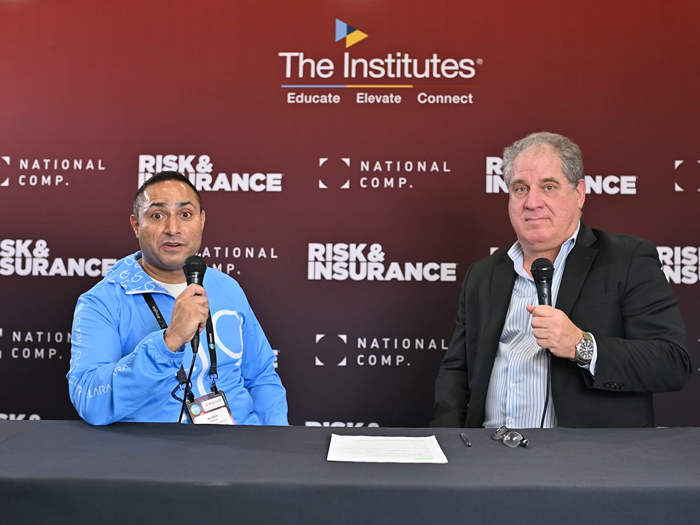Risk Scenario
The Plague of Baltimore
Disclaimer: The events depicted in this scenario are fictitious. Any similarity to any corporation or person, living or dead, is merely coincidental.
A Disturbing Email
Carley Fitzpatrick flipped the line and the blueberry-colored, 7-inch, Texas-rigged rubber worm sank, almost motionless, next to the sunken tree that projected from the near bank of Lake Rita.

She inhaled and exhaled deeply, balancing herself on the wooden seat of the canoe. Must be calm, she reminded herself, must be very calm and settled to do this right.
Carley looked away from her target, to where the sun was banking down below the green crest of trees on the ridge above the lake.
She twitched her rod tip once; paused for several seconds and then twitched it again. Then came the long, strong pull that signified a largemouth bass had sucked in the artificial worm.
She hooked him, netted him, took a brief admiring glance and put him back in the water unharmed.
Paddling back to her SUV, Carley remembered that she wanted to check back in with the office before going home. As the COO of Blue Mountain Regional Medical Center in York County, she was a key player in the hospital group’s expansion plans, putting in extra hours as it built itself into a larger system.
With the outdoorsy Central Pennsylvania lifestyle as a draw, Blue Mountain was successful in drawing talent from Washington, D.C., Philadelphia, Baltimore and Harrisburg. Making the switch from freeways and subways to the countryside dotted with horse farms and wineries was not that hard a sell.
With health care reform on the march, there were a number of smaller, more urban practices that were more than willing to have their assets and liabilities acquired by a hospital system. Health care reform just created too many uncertainties.
Back at the office, Carley opened a disturbing email from the office of Blue Mountain’s general counsel.
The email said that 12 hospitalists in a Baltimore practice that Blue Mountain had acquired six months ago were now defendants in a class-action lawsuit stemming from a hospital-acquired infection outbreak at a Baltimore teaching hospital.
The outbreak had been dubbed “The Plague of Baltimore” by the local press.
“Sending this to you as an FYI, we’re not too concerned about it at this point,” Blue Mountain’s youngish general counsel had typed to Carley in the email.
“I’m not so sure that we shouldn’t be worried about it,” Carley said to herself under her breath as the sky outside her office window darkened into nightfall.
“Can you follow up with me on this or direct me to a copy of the lawsuit?” she wrote back to the general counsel.
Carley had been around long enough to know that Baltimore, along with some other East Coast cities like Philadelphia, fell into the category of legal venue where judge and jury verdicts in personal injury cases could balloon far beyond what might be considered reasonable reparation.
The general counsel may have been good on paper at Dickinson Law, but he just might have a lot left to learn here in the real world.
Carley made a mental note to keep the “Baltimore 12” on her radar.
Look Back in Anguish
With the fate of the “Baltimore 12” never leaving her consciousness for long, Carley called a meeting with Blue Mountain’s director of risk management and insurance, Nathan Haines.

“I just want to be sure,” she said, explaining why she was asking Nate to review with her, yet again, the hospital’s professional liability coverage.
“No problem,” Nate said.
“We’ve got a $5 million self-insured retention and a $10 million excess tower on top of that,” Nate said.
“Which means what again?” Carley said.
“Let’s just say one of our doctors gets sued for medical malpractice and the jury finds against him for $1 million,” Nate said. “We’re self-insured for $5 million, we pay that $1 million out of our pockets.”
“Okay,” Carley said. “But what if …”
Nate knew where she was going.
“If we saw a loss of $6 million,” he said, finishing her thought, “which would be highly unusual, we’d pay $5 million out of pocket and the insurance company would pay $1 million,” Nate said.
“Why so much retention?” said Carley.
“Eh, it’s kind of a balancing act,” said Nate. “You’re trying to offset premium costs by taking some of the risk on.”
“I’d hate to be a risk manager,” Carley said to herself as she left the meeting with Nate.
———
When the “Baltimore 12” case went to trial, the full brunt of what Blue Mountain was facing became more evident.
It turned out that two deaths were linked to the hospital infection outbreak in Baltimore. One of the fatalities was David Brandt, the COO of a well-capitalized, up-and-coming tech firm with naval engineering connections based in Annapolis. Brandt had gone into the Baltimore hospital for knee surgery and hadn’t come out.
The other victim was Anna French, a striking attorney and mother of three who underwent an emergency appendectomy, acquired an infection and died a lingering, painful death.
The framed photographic portrait of a smiling Anna with her equally photogenic husband and children taken on the oak-leaf-speckled lawn of their family home in October was all the jury needs to see.
Three jury members, two of them male, wept openly. The pain and suffering amount decided on was in the tens of millions.
The lifetime income loss of the deceased COO came in at the very high end as well. Aggregate pain and suffering and loss of income determination from the juries in those two cases alone totaled $45 million.
Woulda’, Coulda’, Shoulda’
When Blue Mountain acquired the assets and liabilities of the Baltimore 12, trout fishing and sipping Cabernet Franc next to the fields it was grown in weren’t the only draws.

To lure that talent, Blue Mountain had agreed to cover the physicians’ prior acts as part of their employment benefits.
Talking to Nathan Haines, Carley got yet another insurance lesson.
“We’ve got $20 million in liability in connection with these 12 hospitalists from Baltimore,” Nathan told Carley and the CFO, Fred Rutter, in a closed door meeting on a cold January morning.
“That’s pain and suffering, loss of income and attorneys’ fees,” Nathan said.
The room was silent for a minute.
“What about an appeal?” Fred said just to say something.
“From what the attorneys for the carrier tell us, that would be throwing good money after bad,” Nathan replied.
“Should I go on?”
“Sure,” Fred said.
“The physicians are covered under our limits,” Nathan said. “When we hired them, we didn’t negotiate the option that they have individual limits, so their liabilities hit our entire program,” Nathan said.
“Which means?” said Carley.
“Which means that we are looking at $10 million in uncovered liability, with the carrier picking up the other $10 million,” Nathan said.
———
In the months after that conversation, Blue Mountain Regional Medical Center went from an organization that was expanding and pervaded by a sense of optimism to an organization in retreat.
The aftermath of the “Baltimore 12” jury verdict was that Blue Mountain was going to have to scrap to find a professional liability insurance carrier for the coming year. It was also going to have to take an even higher retention than it had previously.
It was also looking at its additional newly acquired practices with a jaundiced eye.
Attempts to renegotiate professional liability indemnity arrangements after the fact were, to say the least, a point of contention with the doctors’ groups.
As she drove to work one morning the following May, Carley cast a doleful eye out the window to Lake Rita.
She would have liked to be jigging for crappies on the lake, instead of putting in her seventh straight 11-hour day.
The future of Blue Mountain Regional was highly uncertain, having looked so bright just a year or so ago.
“Maybe I should start looking for a job in Baltimore,” Carley said to herself as she drove into the parking lot at work.
Summary
A hospital group seeks to grow by attracting medical practices from around the Middle Atlantic region. But its plans backfire when its insurance coverage is misaligned with the professional liability exposures that some of the acquired physicians bring into the company.
1. Know what you are buying: The Blue Mountain Regional Medical Center erred by not fully understanding the professional liability risks carried by the physicians in the practices it was acquiring.
2. Tailor your coverage: As a hospital group looking to expand by acquiring regional practices, Blue Mountain needed to tailor its coverage to better mitigate potential professional liability risks that were being brought on board. Covering all prior acts with no individual limits was clearly not the way to go here.
3. Risk management needs to drive the bus: Blue Mountain clearly did not have risk management integrated into its acquisition and growth strategies. Risk management should have had more of a voice in what coverage physicians were being offered as a part of their benefits packages.
4. Know your legal venues: The risk to the hospital group in this scenario was compounded by the legal venue the professional liability was being adjudicated in. Professionals being brought in from a legal venue that has a reputation for outsized settlements should be examined with extra care.
5. Beware of the unknowns: The Affordable Care Act has placed health care risk management in flux like never before. Any growth or profit strategy that does not take this vast uncertainty into account is in all likelihood a flawed strategy.











